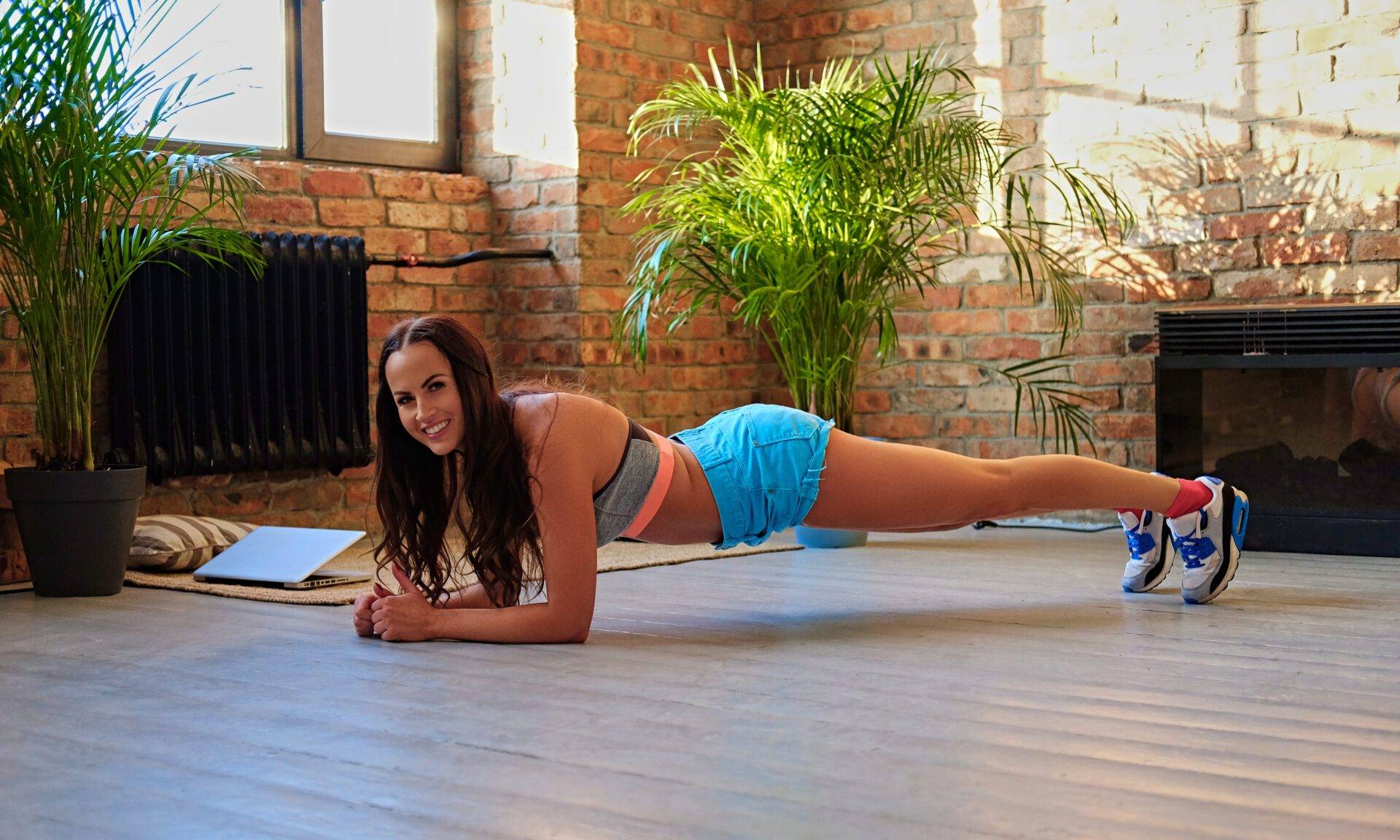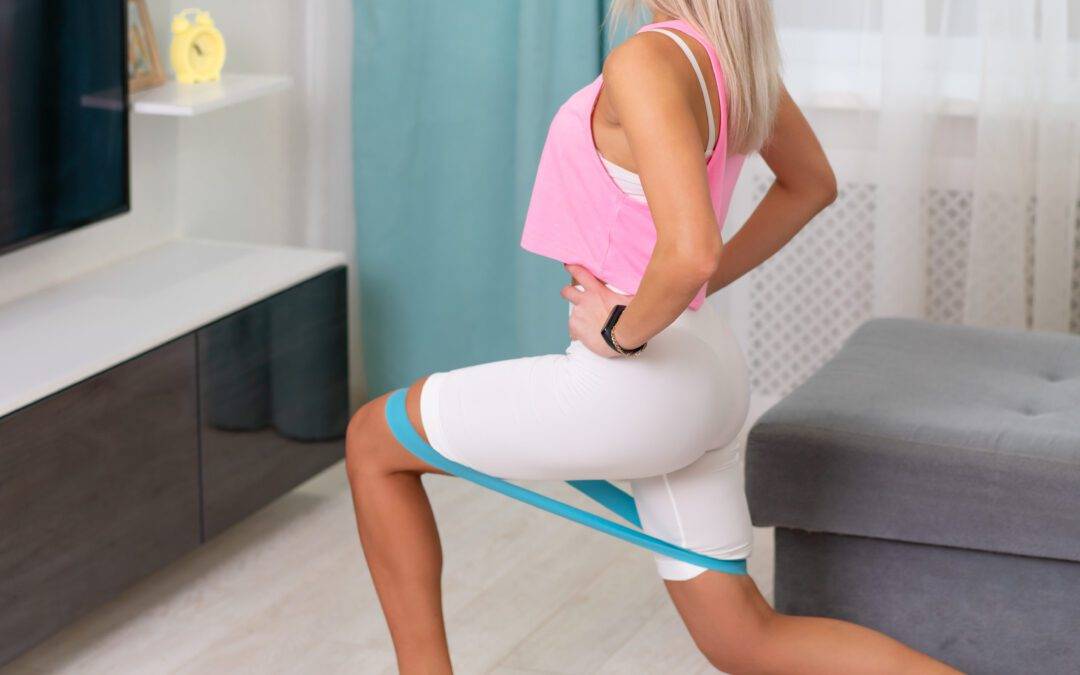By Maria Gehue, PT
In this world of uncertainty, we have been gifted the present of time. In order to stay productive many people have been trying out new recipes, watching series on Netflix, reading books, and trying to maintain an active lifestyle. With the gyms being closed, home workouts and outdoor activities are the most popular ways of keeping our bodies healthy. Many companies have released free online resources for home workouts, and I am not going to lie I debated making some myself. These workouts are a great way to increase your heart rate, get a bit (or a lot) sweaty, and release some stress. After streaming a few videos I have noticed that many of these videos are intense and quite advanced! Holy moly, if we all do not come out of this quarantine with ribbed abs and quads of steel I will be shocked. While I was watching some of these videos, I developed a few tips intuitively that I thought I would share.

1) Understand the movement before adding weight
If you are new to the home workout game, it is not quite the same as going to the gym and lifting things up to put them back down. Instead, you have to try and use household materials or your body weight to work your muscles. With this motive, there are many videos with complicated movements. In addition to challenging movements, some videos encourage you to add a dumbbell or kettlebell to up the difficulty factor. I would highly recommend trying the movements FIRST and understanding what muscle group you are targeting. If you do not feel the activity of the muscle there, then re-watch the video, slow it down, and try again. Never add a weight on the first repetition until you are confident you know what that instructor is doing. If it is a bodyweight exercise like a push-up burpee, try modifying the exercise and focus on your posture. I eliminated the push-up part of those types of burpees and just focused on going from a standing position to a high plank and back up. For a few exercises, I did not add weight until the third day of home workouts. I was unsure of how my body would handle the different movements and I am quite pleased that I allowed myself time to learn. This encouraged me to continue with home workouts instead of being dreadfully sore and full of regret.

2) Alter The Amount of Sets and Repetitions
Remember that many of the instructors online are PAID PROFESSIONALS to become that fit and devoted to a healthy lifestyle. In reality, there are many variations of sets and repetitions depending on what your goals are; strength, power, endurance. A lot of the videos I came across highlighted their goals to be for “toning” your body. In that case, a lower weight and higher amount of sets and repetitions is the prescription. But consider your activity level before committing. If your baseline activity level is on the lower end, I would encourage starting with 1 set of 10 repetitions. You can always increase the amount of sets, aiming for 2-3 sets of 10-12 repetitions. I often will decide while I am doing the exercise what my target reps are. For example, I was doing single-leg squats the other day in my workouts and I tapped out at 3 sets of 6 repetitions. When I did the same exercise a few days later, I noticed I was able to tolerate 8 reps. Small gains are still gains people!
3) Go Easy on The Jumping
Jumping is a high-impact repetitive motion. It causes much more stress on the muscle fibers and can lead to delayed onset muscle soreness (DOMS). It is also a complex motion with multiple joints targeted. Adding in a jumping motion is more advanced than anything. You do not need to jump in order to get your heart rate up and increase difficulty. You can do that by adding in jogging on the spot between exercises, or a dynamic warm-up with high knees and heel kicks. If you want to do some jumping, slowly add them into your workouts and go with how you feel. If there are multiple sets of squat jumps, I would encourage you to try a few and alter the depth you go into the squat. You may just be surprised at how much more DOMS you feel in the days following a workout consisting of many jumping/squatting-type exercises.

4) Be Able to See Yourself Doing The Workout
If possible, set up for the workout in your living room in front of a blank television. This way you can watch your reflection, mimicking the video in order to see if what you are trying to do is what you have intended. If you do not have a TV you could also place a mirror in the same room so you can observe your body mechanics. This can eliminate the risk of injury and you will be able to see what movements were most challenging for proper posture. Think about the basics when it comes to posture, have a nice neutral spine, feet shoulder width apart, ensure your knees stay over your toes when squatting, and be mindful that your head is in a good position over your shoulders and that you are looking straight ahead.
5) Engage The Core
Always always always! Having a slight indrawn of your belly button so you feel a gentle hugging sensation in your core is imperative for spinal health and stability. You should be able to continue breathing at a typical depth even with core support. This is very important with each and every exercise.
Physical activity is great for the body and mind, especially in a time like this. If you have any questions regarding your exercise program or would like virtual guidance from a physiotherapist, feel free to contact the clinic at info@activeapproach.ca. Remember to warm up and stretch afterward, along with giving your body some rest between workouts.

